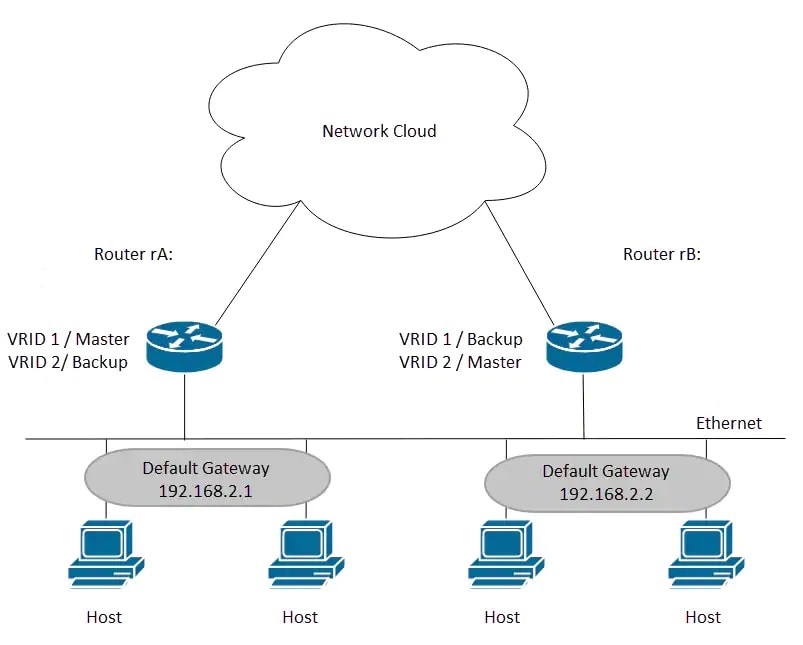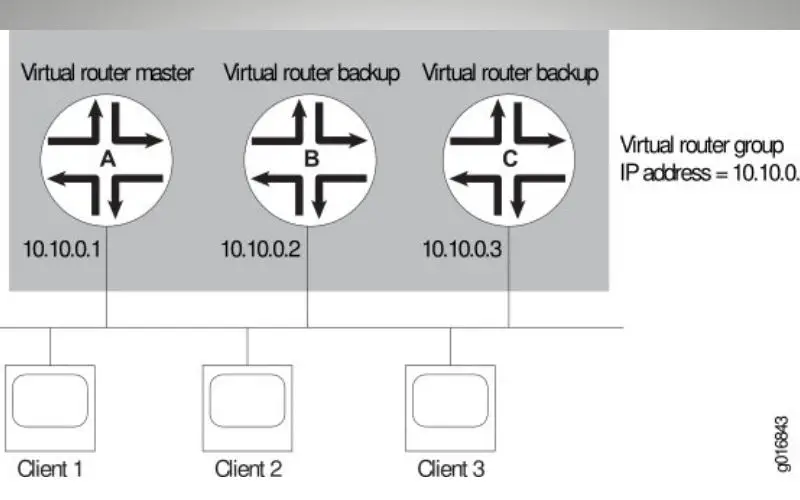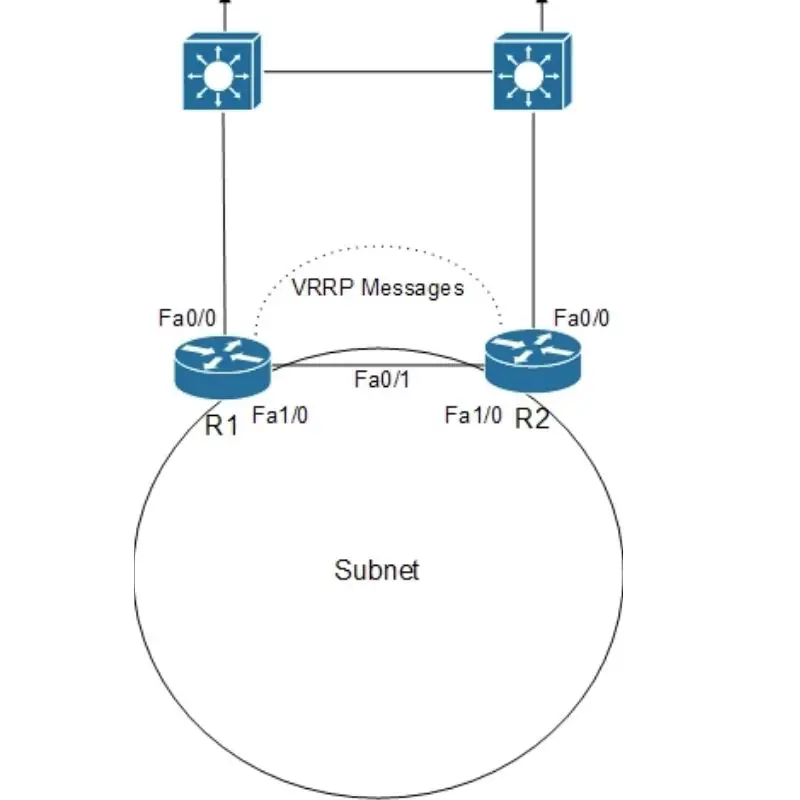
What comes to your mind when you hear the word internet? We believe that many of us are unaware of the scope of the internet. Have you ever wondered how you manage to browse online? Is it only routers and modems, or is there a more general explanation? In this post, we will discuss VRRP and how it operates on our network.
What is VRRP?
No one wants to experience service interruption during a major outage. VRRP is a protocol that can help you maintain connectivity in the event of an outage. VRRP is often deployed on routers, but VRRP can be used on any device with redundant interfaces and routing capability.
VRRP stands for Virtual Router Redundancy Protocol, and it is another protocol that can be used to provide redundancy in certain situations. VRRP is an open standard protocol that the IETF did not develop. VRRP has two versions, VRRPv0 and VRRPv.
VRRPv0
The VRRPv0 protocol was the original version of VRRP, and it is defined in RFC 3768. This version only allows for two virtual routers to be configured on a LAN segment. One primary VRRP router with an active IP address and another backup VRRP router that has no IP addresses assigned to its interface.
However, you can assume responsibility for forwarding packets if the master VRRP router detects a failure or when communication between them fails.
VRRPv
This second version supports up to 255 Virtual Routers per physical interface, each running their independent instance of VRRCP, which advertises itself as such.
So they are all treated independently from one another by other devices outside this networked realm. It also provides support for load balancing VRRP instances on a VRRP router.
How does VRRP Work?
To illustrate how the VRRP works, we provided a sample of the basic VRRP configuration below. Routers A, B, and C in this example are all running VRRP and form a virtual router. This virtual router's IP address is 10.10.0.1. (the same address as the physical interface of Router A).
After reading about what VRRP does, it may now be easy for you to understand how much of an advantage it would be if you had something like that implemented at your school's around campus.
Topology - Image by Juniper
Router A is the main VRRP router since the virtual router utilizes the IP address of Router A's physical interface, while Routers B and C serve as backup VRRP routers. Clients 1–3 are assigned the default gateway IP address of 10.10.0.1. Router A, being the main router, relays packets delivered to its IP address.
If the main virtual router fails, the router with the higher priority takes over as the primary virtual router and continues to provide service to the LAN hosts. When router A recovers, it reverts to being the main virtual router.
What is VRRP Configuration?
The (VRRP) is an election protocol that dynamically allocates responsibility for one or more virtual routers to VRRP routers on a LAN, enabling many routers on a multiaccess connection to share a single virtual IP address.
VRRP routers on the LAN dynamically determine which VRRP router will serve as a master based on priorities and VRRP timers.VRRP provides a redundant default gateway for all hosts connected to the LAN, regardless of whether they are configured with an explicit IP address or not.
A VRRP group is identified by its virtual IP address (which must be in the same subnet as the VRRP group). It has one master router (the VRRP router with the highest priority in that VRRP group) that assumes responsibility for forwarding packets sent to this virtual IP address.
Simple Configuration Steps for VRRP
There are a few commands required to get VRRP working. These commands are used to modify the default behavior of VRRP:
STEPS | COMMAND |
|---|---|
1. To enter the privilege EXEC mode | router>enable |
2. To enter Global Configuration mode | router#configure terminal |
3. To enter interface configuration mode | router(config)#interface interface |
4. To configure an IP address on the interface | router(config-if)#ip address address netmask |
5. To configure a VRRP virtual IP address | router(config-if)#vrrp group-number ip ip-address |
Let's assume the topology below will be used and table 2, table 3 will display the commands required for R1 and R2.

VRRP Topology - Image by Pearsonitcertification
The configuration below will perform the following:
- Configure the IP addresses 10.10.20.1/30 (R1) and 10.10.20.2/30(R2) on their Fa0/1 interfaces.
- Configure the IP addresses 172.16.1.1/24 (R1) and 172.16.2.1 (R2) on their Fa0/0 interfaces.
- Configure VRRP between R1 and R2 using the IP addresses 10.10.10.1/24 (R1) and 10.10.10.2/24(R2) and a virtual IP address of 10.10.10.5 on their Fa1/0 interfaces.
- Configure R1 with a VRRP priority of 140.
r1 configuration | COMMAND |
|---|---|
To configure the privileged EXEC mode | R1>enable |
To enter global configuration mode | R1#configure terminal |
Enter interface configuration mode | R1(config)#interface fa0/0 |
To configure an IP address on the interface | R1(config)#interface fa0/0 |
To enter interface configuration mode | R1(config)#interface fa0/1 |
To configure an IP address on the interface | R1(config-if)#ip address 10.10.20.1 255.255.255.252 |
To enter interface configuration mode | R1(config)#interface fa1/0 |
To configure an IP address on the interface | R1(config-if)#ip address 10.10.10.1 255.255.255.0 |
To configure VRRP using a virtual IP address of 10.10.10.5 using group 1 | R1(config-if)#vrrp 1 ip 10.10.10.5 |
To configure the VRRP priority to 140 | R1(config-if)#vrrp 1 priority 140 |
r2 configuration | COMMAND |
|---|---|
To enter privileged EXEC mode | R1>enable |
To enter global configuration mode | R1#configure terminal |
To enter interface configuration mode | R1(config)#interface fa0/0 |
To configure an IP address on the interface | R2(config-if)#ip address 172.16.2.1 255.255.255.0 |
To enter interface configuration mode | R1(config)#interface fa0/1 |
To configure an IP address on the interface | R2(config-if)#ip address 10.10.20.2 255.255.255.252 |
To enter interface configuration mode | R1(config)#interface fa1/0 |
To configure an IP address on the interface | R2(config-if)#ip address 10.10.10.2 255.255.255.0 |
To configure VRRP using a virtual IP address of 10.10.10.5 using group 1 | R2(config-if)#vrrp 1 ip 10.10.10.5 |
Benefits of Using VRRP
- VRRP provides failover redundancy between hosts and VRRP routers.
- VRRP provides load balancing between VRRF enabled devices and VRRP routers.
- VRRP provides automated recovery from VRRF router failure. VRRP enabled hosts are informed of VRRF if a VRRP router fails.
- VRRP does not use UDP nor TCP but instead uses IP protocol 112 for advertisement messages sent between VRRF enabled devices.
- VRRP itself does not have a direct configuration on the host machine but instead uses a VRID number to identify which group each router belongs to.
- VRRP allows multiple virtual router advertisements to exist on a single LAN/VLAN segment (subnet) as long as they're configured into different groups by setting their VRID numbers appropriately.
- VRRP can help maintain connectivity when a device fails
When Not to Use VRRP?
VRRP is a useful VR for networks that require that the VR device address as their default gateway. In this way, the VR can act like an HSRP group and be used to failover between different routers on your network, giving you high availability if one of those devices fails or becomes unreachable from certain parts of the LAN.
However, VRRP should not be used where multiple physical gateways exist on a single subnet with non-VRRP capable hosts present computers running software such as Windows Network Load Balancing) because these hosts will never forward traffic via VRRP unless they are modified to do so specifically by setting up static ARPs or configuring proxy ARP entries manually.
Troubleshooting and Management Tips
If you had a hard time following VRRP before, you're not alone. Here are a few tips to keep in mind if VRRP isn't working as expected:
- Ensure that all VRID interfaces on your routers have the same priority so they can work together properly.
- If one of the devices is having trouble becoming a master or backup router for some reason (e.g., interface error), it may help to manually change its role by setting "preemption" mode off and/or changing priorities. However, this should be seen only as a temporary fix because those settings will revert once the VRRP uplink recovers.
- Try using plain IP address instead of VRIDs when configuring VRRP between two specific hosts to avoid confusion about other possible VRIDs used within the VRRP group.
VRRP FAQs
1. How many routers can participate in VRRP?
VRRP allows for up to 255 virtual routers (VRRP groups) on a router and up to four virtual routers on each interface, assuming the hardware supports multiple MAC addresses. You may use several virtual routers to provide redundancy and load sharing in your LAN architecture.
2. What will happen if the configuration is performed wrongly?
If the VRRP configuration is performed wrongly, the VRRPs will not discover each other and will not function properly. In VRRP version two, there are no known issues with this type of misconfiguration.
If you have made a mistake in your configurations, it might result in traffic disruption on your network temporarily while VRRP virtual routers recover from the faulty state.
3. What should I do if my uplink fails?
Typically, when an interface goes down or flaps (comes up/down repeatedly), VRRP groups residing on that physical router become unavailable for use by hosts connected to those VLANs affected by the failure.
This behavior can leave services within these VLANs without any redundant gateway available until either the failed link is restored or the VRRP group is failed over. If you have made a mistake in your configurations, it might result in traffic disruption on your network temporarily while VRRP virtual routers recover from the faulty state.
Conclusion
VRRP is a great way to implement redundancy into your wireless networks or even in wired networking. It allows you to do that for free without spending any money on expensive hardware. While also gaining high availability for users, it is an ideal protocol if you are looking to implement something like this one day.
After reading about what VRRP does, it may now be easy for you to understand how much of an advantage it would be if you had something like that implemented at your school's wireless networks around campus.